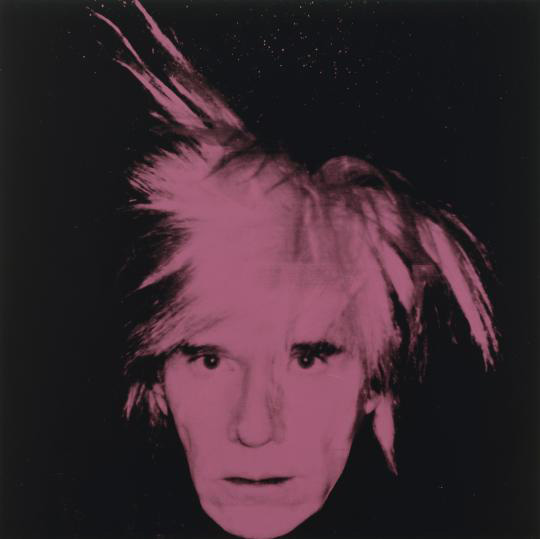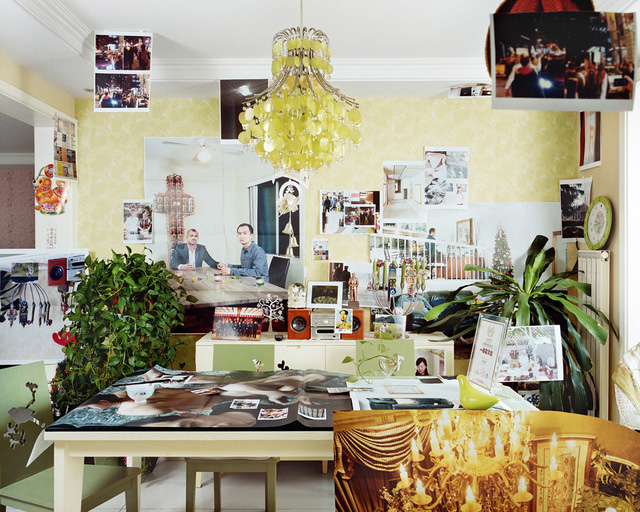
Ten LGBTQ Artists Featured at MFAH’s New Nancy and Rich Kinder Building
Take note of these creators on your next visit to the museum.

When the Museum of Fine Arts, Houston, unveiled its new Nancy and Rich Kinder Building in November, it marked a golden new era for the 121-year-old institution. It also gave Houston an iconic new architectural landmark in the heart of the Museum District.
The 237,000-square-foot building, located at 5500 Main Street, was designed by architect Steven Holl and hailed by the Wall Street Journal as “a triumph.” The new facility expands the museum’s gallery space by 75 percent, enabling the company to display its burgeoning collection of modern and contemporary art, the majority of which had previously gone unseen.
The Kinder Building also provides a spectacular showcase for the Museum’s superb holdings of works by Latino and Latin American artists—almost a quarter of the 1,100 objects on display in the new facility. And perhaps most importantly for Houston’s LGBTQ community, the facility also spotlights the works of some of the most exciting and important international queer artists from the 20th and 21st centuries, spanning the globe from China and Africa to Europe and Texas.
Here are 10 LGBTQ artists to take note of on your next visit to the Kinder Building:
1. Zanele Muholi’s Misiwe IV, Biljmer, Amsterdam

Zanele Muholi’s towering self-portrait dominates the photography gallery with its fierce, dramatic intensity. For almost two decades, the photographer has documented the lives of the LGBTQ community in South Africa. Today, Muholi’s star is white-hot in the international art world as they enjoy a major mid-career retrospective at London’s prestigious Tate Modern.
“It is our responsibility as activists and artists—as activists who practice art—to challenge all ‘isms,’” Muholi told Tate Etc in 2020. “To combat bias and erasure. To keep the dialogue going and create opportunities for others less fortunate or privileged. To open access to spaces historically denied to us—to black, queer, trans, female-bodied and gender-nonconforming individuals, especially. That is my main agenda going forward: to queer, to blacken, to open, and to occupy spaces.”
(Location: second floor, Gallery 208, photography gallery)
2. Andy Warhol’s Self-Portrait, 1986

Another self-portrait—that of Andy Warhol, the American master of Pop Art—commands the modern and contemporary art gallery. He made his first self-portrait in 1964, and this work from the museum’s collection was created in 1986, a year before his death. Suffused in pink, the image captures the artist’s shock of white hair and his intense, contemplative gaze. The art historian Carter Ratcliff has observed, “As blank and anesthetized as his surfaces sometimes are, they hide depths of a traumatized self or a deep sense of the random and depersonalized tragedy of the modern world.” (Location: second floor, Gallery 203, modern and contemporary art gallery)
3.Robert Rauschenberg’s Sor Aqua (Venetian)

Across the gallery from Warhol’s self-portrait are works by two of his contemporaries: Robert Rauschenberg and Jasper Johns, who had a closeted love affair lasting from 1954 to 1961. They would go on to revolutionize American art through their appropriation of what Johns described as “the things the mind already knows.” Born in Port Arthur in 1925, Rauschenberg is represented by Sor Aqua (Venetian), a major assemblage from 1973 that features a bathtub, rope, and a glass jug. The work pays homage to the Italian city of Venice, where in 1964 the Texan became the first American to win the Venice Biennale’s grand prize. (Location: second floor, Gallery 203, modern and contemporary art gallery)
4. Jasper Johns’ Cicada

Jasper Johns has several works in different galleries in the Kinder Building. Ventriloquist, a 1983 piece featuring his trademark flag imagery, is on view in the modern and contemporary art gallery on the second floor. His Cicada series, vibrantly colorful works on paper created between 1979 and 1981, is on display in the prints and drawings gallery. Johns, who has been hailed by the New York Times as “America’s foremost living artist,” celebrated his 90th birthday in May 2020. In the fall, he will be honored with vast, concurrent retrospectives at the Whitney Museum of American Art, in New York City and the Philadelphia Museum of Art in recognition of his enormous influence over the last seven decades. (Location: second floor, Gallery 207, prints and drawings gallery)
5. Guanyu Xu’s The Dining Room

One of the strengths of the Kinder Building is its focus on living artists who are actively creating work today. Not yet thirty, the Chinese photographer Guanyu Xu lives an openly queer life in America. But when he visits China to see his parents (who do not know that he is gay), he must go back into the closet. When his parents are away at work, he secretly alters their home by inserting countless photographs that he has made or collected. As his gallerist Yancey Richardson notes in his biography, “His work bridges the gap between the personal and political, highlighting the disparities and connections between the two nations, in which his intersectional experience of the U.S. meets his conservative familial experience of China.” (Location: second floor, Gallery 208, photography gallery)
6. Rachel Hecker’s Bait

Rachel Hecker came to Houston in 1982 from the Rhode Island School of Design (at the beginning of the Texas art boom) to help launch MFAH’s prestigious Core Program, where she served as associate director from 1982 to 1991. For almost three decades, she has been an associate professor of painting at the University of Houston School of Art. In 2013, she was honored as Texas Artist of the Year by the Art League of Houston. She has been praised by critics for the wit, invention, and the beguiling use of humor in her works—qualities in abundant supply in this 1995 piece. (Location: third floor, Gallery 313)
7. Mark Bradford’s Circa 1992

African American artist Mark Bradford launched his career as a self-described “beauty operator” in his mother’s hair salon in Los Angeles, and didn’t take his first art course at a community college until he was almost thirty. He didn’t sell his first work of art until he was almost forty. In 2017, he was selected to represent the United States at the prestigious Venice Biennale. Today, his art fetches millions, and collectors of his work include Beyoncé, Shawn Carter, and Anderson Cooper.
Bradford fearlessly tackles difficult social issues in his oeuvre, ranging from the AIDS epidemic and the complexities of American history to the 1965 Watts Riot. Circa 1992 was inspired by the community response in the wake of the 1991 beating of Rodney King in Los Angeles. After the first days of violence, local church groups issued signs proclaiming “Rebuild South Central Without Liquor Stores!/¡Reconstruir al sur Central Sin Negocios de Bebeidas Alcoholicas!” By repeating these phrases in his painting, Bradford pays tribute to the spirit of community renewal. (Location: third floor, Gallery 314, Collectivity)
8. Nick Cave’s Soundsuit

Artist Nick Cave also responded to the trauma of the Rodney King beating with a completely different type of work: a vibrantly colorful, surreal mixed-media piece incorporating rugs, mannequin legs, and crocheted socks. Over the last three decades, Cave has created 500 soundsuits—wearable sculptural forms based on the human body and comprised of found objects—which have become his signature works.
“I felt like my identity, and who I was as a human being, was up for question,” Cave told the New York Times, recounting how the 1991 Los Angeles event shook him as an African American man. “I felt like that could have been me. Once that incident occurred, I was existing very differently in the world. So many things were going through my head: How do I exist in a place that sees me as a threat?” He has transmuted his pain into the soundsuit works, which can be displayed in museums and galleries but also worn in live theatrical and dance performances. As Megan O’Grady observed in the New York Times, the soundsuits have “grown alongside Cave’s practice, evolving from a form of protective shell to an outsize, exuberant expression of confidence that pushes the boundaries of visibility. They demand to be seen.” (Location: third floor, Gallery 314, Collectivity)
9. Mickalene Thomas’ Lovely Six Foota

Throughout her career, Mickalene Thomas has delved deeply into the African-American female experience and the history of art. Her 2007 photograph Lovely Six Foota depicts a fierce, sensual African-American woman, arrayed in chic 1970s attire, trailing clouds of Black Power and feminist glory as she looks boldly at the viewer with her blouse unbuttoned and her legs spread slightly. Thomas created this installation, replete with 1970s furnishings and vinyl LP album covers. (Location: third floor, Gallery 314, Collectivity)
10. Catherine Opie’s Flipper, Tanya, Chloe, & Harriet, San Francisco, California

For over three decades, the celebrated American photographer Catherine Opie has found inspiration in a variety of subjects: the freeways of Los Angeles, the personal effects of Elizabeth Taylor, Tea Party rallies, Lake Michigan, and San Francisco’s gay and lesbian sadomasochistic community, of which she was an active part. But she is perhaps best known for her documentary portraits of queer people, shot with a piercing beauty and uncommon psychological insight. “I take a very traditional way of looking at portraiture to photograph a nontraditional and misrepresented community in a loving and dignified way,” Opie has explained. In the 1990s, she embarked on a cross-country road trip to photograph lesbian families, and this beautiful 1995 work is a portrait of her own family of choice. (Location: third floor, Gallery 314, Collectivity)
This partial list only scratches the surface of the treasures on view. Other queer artists featured in the Kinder Building include British icon Francis Bacon, visionary Texas artist Forrest Bess, photographer Kyle Meyer, the overlooked Harlem Renaissance master Richmond Barthé, and Marsden Hartley, among many others.
The Museum of Fine Arts, Houston, offers free admission, including to the Kinder Building, on Thursdays from 11 a.m. to 9 p.m. For more information, visit mfah.org.
This article appears in the February 2021 edition of OutSmart magazine.










